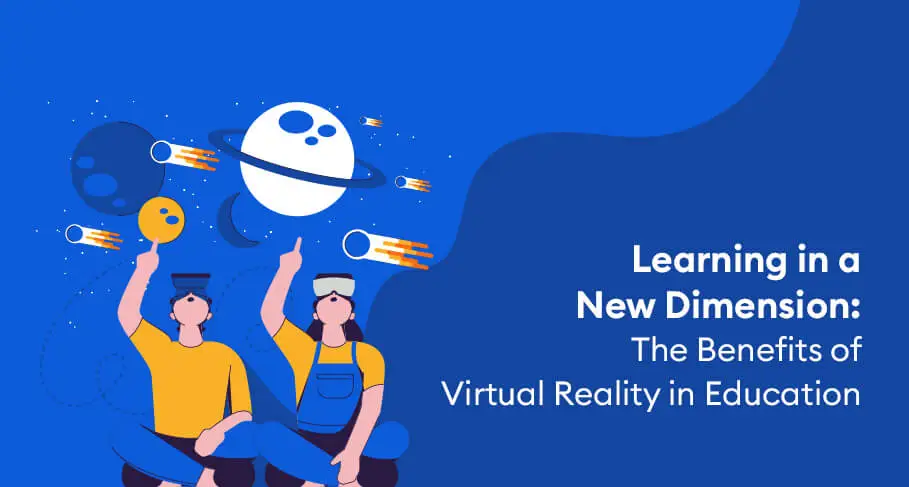Have you noticed how everything around us yearns for attention, yet our ability to focus and concentrate is declining?
Nir Nayal, a former Stanford lecturer and behavioural designer, observed that being ‘indistractable’ is the most important ‘skill of the century’. As educators, we often face challenges in capturing and retaining learner attention. The constant disruption from smartphones and distractions from the outside world makes keeping learners engaged in the classroom quite challenging.
With the emergence of virtual reality (VR), we have a powerful tool at our disposal to captivate and hold learner attention like never before. As someone who has been associated with the education industry for more than three decades, I have closely witnessed VR’s impact on learner engagement. I have seen learners who were previously uninterested in a subject become engrossed in a VR simulation, eager to explore and learn. VR taps into a natural curiosity and love of exploration, making learning engaging and fun.
Here are a few benefits of having virtual reality in education:
Access the inaccessible
Classrooms are portals of learning. They are a hotbed for ideas and innovation. They nurture and sculpt great thinkers, researchers, and leaders. Classroom environments are in constant need of novel styles of teaching and ingenious teaching aids. VR fits right in! Learners can access previously inaccessible spaces to dig deeper into resources and learn better. This access includes microscopic places such as cells, dangerous areas such as within a working engine, on far-reaching locations such as the moon. They can simply put on their headsets and study the human body in microscopic detail. They can observe organs up close and interact with them. They can watch the blood flow through veins and arteries, learn how the heart pumps blood, and how the lung works. The ability of VR to provide a novel and stimulating learning experience can enhance student concentration and retention of information. Students tend to be more engaged and focused when fully immersed in a VR learning experience. VR offers a high level of interactivity, engagement, and accessibility that complements traditional classroom teaching. This makes learning enjoyable, thereby enhancing retention and recall.
Distraction-free learning
VR offers numerous benefits, and one of the most significant is a distraction-free learning environment. Learners using a VR headset are transported to a virtual world specifically designed for educational purposes. During one of my visits to a school, I remember seeing students learning about marine biology in VR, and the results were quite amazing. They were so engrossed in the lesson that they didn’t notice anyone else around them. They were fully immersed in the virtual experience that enabled them to focus solely on the lesson. A focused learning environment helps learners retain information and enhance learning outcomes. VR allows learners to fully immerse themselves in the learning experience by providing a distraction-free environment.
Making impossible experiences possible
For me, technology is a means to make learning as accessible as possible to learners. I have worked with many students, and being able to expose them to unique experiences brings me tremendous joy. VR can bridge the gap between what students can and cannot physically do, making learning more inclusive and embracing diversity in the classroom. I have had firsthand experience in witnessing this transformative impact. During one of my meetings with Tsubasa, a young Japanese guy who suffers from cerebral palsy, I introduced him to the world of VR through a learning module on Taj Mahal. An adventurous soul, Tsubasa travelled to the Taj, and took a virtual tour around the mausoleum. VR enabled him to get a good sense of being there, and experience something which was almost impossible to do, given his condition. His reaction was priceless! VR can enable students to have experiences that would be impossible in the real world. For learners with special needs, this can be a particularly powerful experience.
Something for everyone
VR engages multiple senses and provides an interactive experience, enabling students to fully immerse in the subject matter, leading to a deeper understanding and retention of knowledge. It facilitates personalized and self-paced learning. Most students have unique learning styles and preferences. Some may struggle to stay focused, follow instructions, and tune out distractions, necessitating additional support and accommodations. Being behind or struggling to keep up with peers can be emotionally distressing for them, resulting in an overwhelming and frustrating learning experience. With VR, students can learn at their own pace and explore topics in a way that suits their learning style. VR can accommodate diverse learning preferences, whether they prefer a hands-on approach, visual learning, or auditory cues. This personalized learning experience can significantly improve student motivation, engagement, and overall academic performance.
VR is a powerful tool that has the potential to enhance learning outcomes and create engaged learners significantly. As educators and innovators, we have an exciting opportunity to harness the power of VR to unlock new possibilities and improve the educational experience for students of all backgrounds and abilities.
